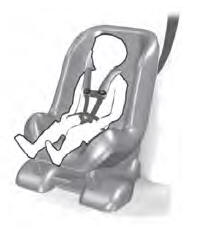Lincoln Aviator 2020-2025 Service Manual / Powertrain / Engine / Evaporative Emissions - 3.0L EcoBoost / Removal and Installation - Fuel Tank Pressure Sensor and Tube
Lincoln Aviator: Evaporative Emissions - 3.0L EcoBoost / Removal and Installation - Fuel Tank Pressure Sensor and Tube
Special Tool(s) / General Equipment
| Transmission Jack |
Removal
NOTE: Removal steps in this procedure may contain installation steps.
-
Disconnect the battery.
Refer to: Battery Disconnect and Connect (414-01 Battery, Mounting and Cables, General Procedures).
-
Release the fuel system pressure.
Refer to: Fuel System Pressure Release (310-00A Fuel System - General Information - 3.0L EcoBoost, General Procedures).
-
Drain the fuel tank.
Refer to: Fuel Tank Draining (310-00A Fuel System - General Information - 3.0L EcoBoost, General Procedures).
-
Remove the bolt and detach the retainer clips. Position aside the wiring harness.
Torque: 106 lb.in (12 Nm)
.jpg) |
-
Disconnect the electrical connector.
.jpg) |
-
Remove the quick release couplings and fresh air tube from canister.
Refer to: Quick Release Coupling (310-00A Fuel System - General Information - 3.0L EcoBoost, General Procedures).
.jpg) |
-
Remove the quick release couplings.
Refer to: Quick Release Coupling (310-00A Fuel System - General Information - 3.0L EcoBoost, General Procedures).
.jpg) |
-
Remove the bolts and fuel tank.
Install the General Equipment: Transmission Jack
Torque: 35 lb.ft (47 Nm)
.jpg) |
-
-
Disconnect the electical connector and quick release coupling.
-
Detach the clip and postion aside the fuel outlet hose.
-
Disconnect the electical connector and quick release coupling.
.jpg) |
-
Remove the push pins and fuel tank shield.
.jpg) |
-
Remove the fuel tank insulator.
.jpg) |
-
-
Disconnect the electrical connector.
-
Disconnect the quick release coupling and remove the fuel tank pressure sensor and tube.
Refer to: Quick Release Coupling (310-00A Fuel System - General Information - 3.0L EcoBoost, General Procedures).
-
Disconnect the electrical connector.
.jpg) |
Installation
-
To install, reverse the removal procedure.
 Removal and Installation - Fuel Vapor Vent Valve
Removal and Installation - Fuel Vapor Vent Valve
Removal
NOTE:
Removal steps in this procedure may contain installation details.
With the vehicle in NEUTRAL, position it on a hoist.
Refer to: Jacking and Lifting (100-02 Jacking and Lifting, Description and Operation)...
Other information:
Lincoln Aviator 2020-2025 Owners Manual: Principle of Operation
WARNING: You are responsible for controlling your vehicle at all times. The system is designed to be an aid and does not relieve you of your responsibility to drive with due care and attention. Failure to follow this instruction could result in the loss of control of your vehicle, personal injury or death...
Lincoln Aviator 2020-2025 Service Manual: Specifications
Lubricants, Fluids, Sealers and Adhesives Specifications Motorcraft® MERCON® ULV Automatic Transmission Fluid / XT-12-QULV MERCON® ULV / WSS-M2C949-A Capacities NOTE: The transmission fluid amount listed is for a completely dry transmission and torque converter...
Categories
- Manuals Home
- Lincoln Aviator Owners Manual
- Lincoln Aviator Service Manual
- Body and Paint
- Interior Lamps
- Disabling Auto-Start-Stop
- New on site
- Most important about car
Child Seats

Use a child restraint (sometimes called an infant carrier, convertible seat, or toddler seat) for infants, toddlers and children weighing 40 lb (18 kg) or less (generally four-years-old or younger).
Using Lap and Shoulder Belts
WARNING: Do not place a rearward facing child restraint in front of an active airbag. Failure to follow this instruction could result in personal injury or death.
Copyright © 2025 www.liaviator2.com

